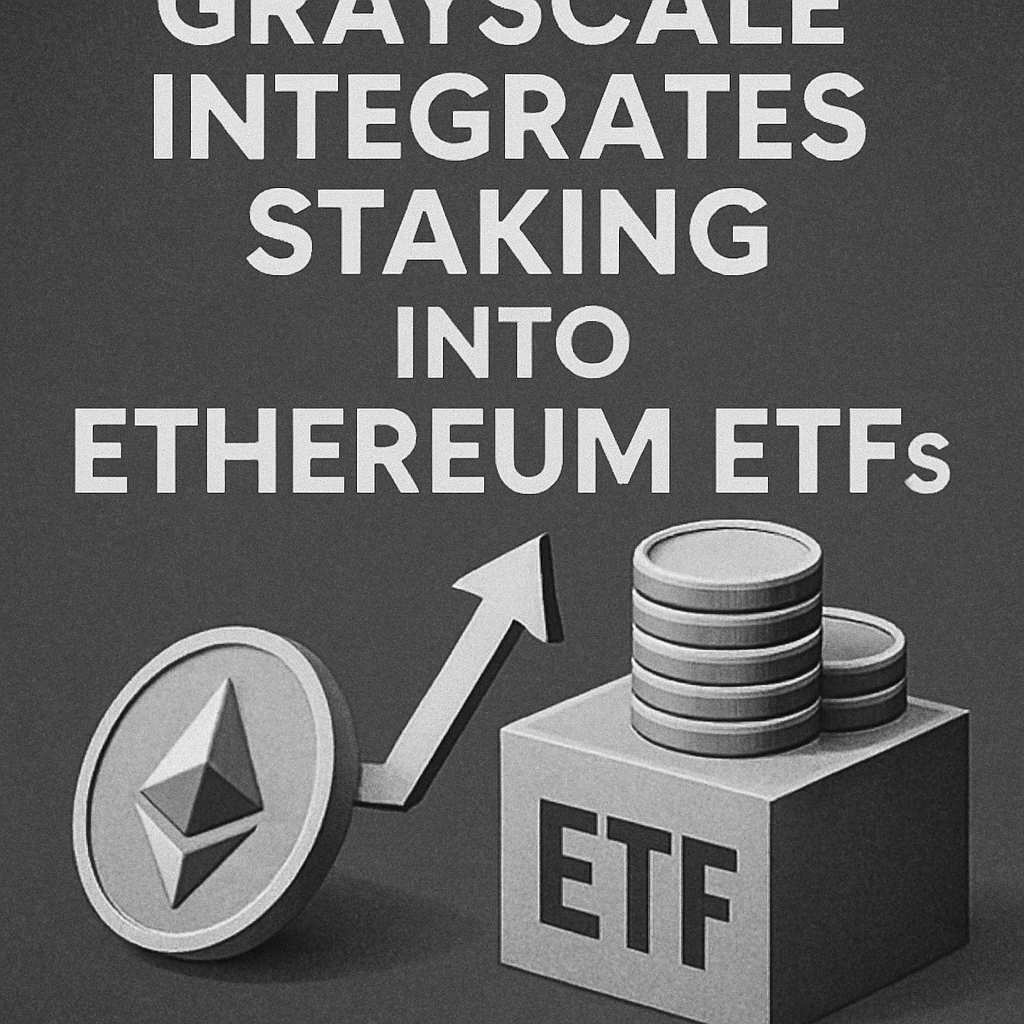First US Asset Manager to Offer ETF Staking
Grayscale Investments launched staking functionality within its spot exchange-traded products on Oct. 6, 2025, becoming the first major US fund manager to integrate on-chain yield mechanisms directly into ETF structures. Staking is now available for both the Grayscale Ethereum Mini Trust (ETH) and the flagship Grayscale Ethereum Trust ETF (ETHE), offering investors the choice between reinvested rewards or cash distributions.
Mechanics and Benefits
Under the new model, fund assets are delegated to secure Ethereum’s proof-of-stake network, generating staking yields that average around 3.2% annually. A portion of the rewards is used to offset management fees, potentially lowering the net expense ratio for investors. The remaining rewards can be automatically reinvested to compound returns or paid out as distributions to provide steady income.
Extension to Solana Product
Grayscale also updated its Solana Trust (GSOL) to include staking, pending SEC approval for uplisting as a spot ETF. Upon conversion, GSOL would become among the first Solana-based ETPs offering direct staking exposure within a regulated investment product, drawing institutional and retail interest to Solana’s proof-of-stake ecosystem.
Regulatory and Market Implications
- Regulatory Clarity: The SEC’s shift away from treating liquid staking as an unregistered security has cleared the path for integration within ETFs.
- Competitive Dynamics: Asset managers may adopt similar models, driving fee competition in the rapidly expanding ETF market.
- Staking Ecosystem Growth: Institutional participation via ETFs could boost total value locked (TVL) in staking derivatives and liquid staking protocols.
Future Outlook
With approximately 36 million ETH (30% of supply) currently staked, institutional ETF staking could channel significant additional capital into the network, reinforcing security and decentralization. Market observers will track fee adjustments, redemption mechanisms, and further product launches to gauge the long-term impact on both crypto investment and network health.

Comments (0)